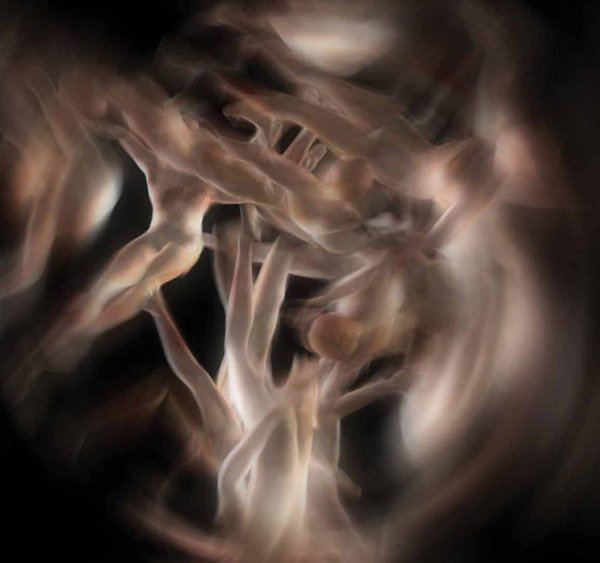Sleuthing the Mind
dal 16/9/2014 al 4/11/2014
Segnalato da
Susan Aldworth
Jennifer Bornstein
Hans Breder
Robert Buck
Jim Campbell
Suzanne Dikker
Matthias Oostrik
Gregory Garvey
Kurt Hentschlager
Nene Humphrey
Ellen K. Levy
Michael E. Goldberg
Mike Metz
Warren Neidich
Patricia Olynyk
Nicole Ottiger
Jane Philbrick
Jill Scott
Ellen K. Levy
16/9/2014
Sleuthing the Mind
Pratt Manhattan Gallery, New York
Through video, performance, human-computer interface, virtual reality, and traditional artistic approaches, this exhibition explores the mind's many facets, presenting an expanded field of artistic practice informed by neuroscience.

Curated by Ellen K. Levy
Sleuthing the Mind
attempts to
bring some of the automatic processes of the mind/brain—through
which we perceive both ourselves
and the world—into conscious
recognition. The artists have constructed experiences, many disorienting, in which we might intuit
what it means for minds to be
divided, aroused, recalibrated, or
rewired. Some of the artists in the
exhibition aim to reset the viewer’s
focus. All engage current neuroscientific concepts. Those works
that appear to be near counterparts of scientific testing generally
expand into personal, social, and
political domains.
The works in the
exhibition may encourage viewers
to consider more fully the forces
of attention, memory, feelings,
and intuition. Many of the works
seemingly align the brain’s ability to
change as a result of experience
with cultural developments. We
may sense how minds mark culture
and the reverse: how culture marks
the mind.
This bidirectional inter-change allows us to connect with
minds and creations across scales
of time, thereby addressing, if only
in part, why art matters The dynamic expansion of artistic
practices through video, performance, human-computer interfaces, and virtual reality, along with
traditional approaches, now offers
new ways to bring adjustments of
the body to conscious recognition
and to explore the mind’s many
facets. In
Greg Garvey
’s video
installation
The Split-Brain (Dichoptic) Interface: Thomas v. Hill
(1999/2014), the observer receives
conflicting sounds and vision in
each separate hemifield that she
attempts to resolve. Garvey enables us to experience the quandary of a divided mind. Although
he was influenced by Michael
Gazzaniga’s split-brain research
(itself informed by Roger Sperry),
Garvey has imaginatively aligned
the cognitive difficulty with the political dissonance of the Anita Hill/
Clarence Thomas hearings.
Kurt
Hentschläger
’s generative audio-visual installation
HIVE
(2011) presents an ever-changing, swarming
humanlike organism, confounding
viewers with an extended sense
of consciousness. Hentschläger
realizes his vision through stereoscopy, by utilizing 3-D glasses with a
specially prepared (layered) looping
playback video file. In drawings displayed in 2007,
Robert Buck
(then
known as Robert Beck) involved
viewers in questioning some historical medical records of psychological functioning. During the 1960s,
some psychologists purported to
identify their patients’ emotional
states through personality assessment tests in the form of drawings.
Buck’s subsequent re-drawing
undermined the belief that the
drawings of the patients showed
“evidence” of pathology. Affect is
also explored in
Nene Humphrey’s reestanding installation,
Mapping
(2013) that visualizes neural activity within the larger arena of our
cultural world. Microscopic images
of the brain (some gleaned from
Joseph LeDoux’s laboratory) are
coupled with Victorian mourning
braids made with wire and festooned with crystal teardrops,
beads, bookbinder’s cloth, and
glass. The combination invokes rituals that fuse emotion and memory
with the neurons that elicit such
states of arousal. Similarly involved
with emotion and empathy,
Susan
Aldworth
uses a mixture of printing
techniques in response to a friend
having breast cancer in
Fragility 3
and 4
(2009). Neuroimaging offers a
whole new set of possibilities to explore the architecture of the brain.
Aldworth uses it to expose our vulnerability in an existential sense.
Several artists in the exhibition explore the recalibration of our senses
through art.
Sleuthing the Mind
asks visitors to
explore how art focused on the
body and the constraints of vision
can not only impact the systems of
the brain but increase self-awareness. It presents us to ourselves as
if we were strangers, attempting to
“re-set” our minds.
Might art and art exhibitions add
new paths into the understanding
of intuition, insight, and attention?
Artists:
Susan Aldworth
Jennifer Bornstein
Hans Breder
Robert Buck
Jim Campbell
Suzanne Dikker and Matthias Oostrik
Gregory Garvey
Kurt Hentschläger
Nene Humphrey
Ellen K. Levy and Michael E. Goldberg
Mike Metz
Warren Neidich
Patricia Olynyk
Nicole Ottiger
Jane Philbrick
Jill Scott
This exhibition is made possible in part by a grant from the Swiss Arts Council Pro Helvetia
Panel discussion:
Art, Design, and the Cognitive Shift
Wednesday, October 8, 2014, 6:30 PM, room 213 (adjacent to the gallery
Opening reception: Tuesday, September 16, 6–8 PM
Special performance of “Axial Music” by George Quasha and Charles Stein at 7 PM
Pratt Manhattan Gallery
144 West 14th Street, Second Floor New York, NY 10011
Hours: Monday–Saturday 11am–6pm, Thursdays until 8pm
Gallery will be closed December 24–January 1 and January 19
Admission is free



